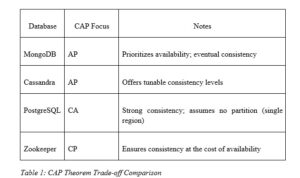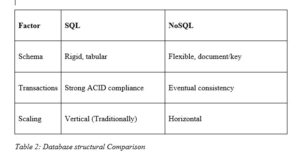By Okoli Johnson
In a world where digital services power everything from ride-hailing to remote health consultations, building systems that scale seamlessly and stay resilient is no longer a luxury, it’s a necessity.
System design architecture sits at the core of this reliability. It determines how an application handles spikes in traffic, recovers from failures, and meets growing user expectations across continents. Yet, it’s often misunderstood as a concept reserved for Big Tech alone. In reality, every startup, developer, and product team benefits from understanding its core principles.
Why System Design Matters
Imagine a fintech app that crashes each time salaries are disbursed or an e-commerce site that struggles during Black Friday sales. These failures aren’t due to poor UI but weak backend foundations.
System design is the process of planning how each part of an application servers, databases, caches, queues interacts efficiently. It ensures apps are not only functional but also dependable, fast, and cost-effective as user demand grows.
Whether you’re building a social platform for students or a smart energy grid for rural communities, how you design your system determines if it thrives or fails under pressure.
 Scaling Smart: Vertical vs. Horizontal
Scaling Smart: Vertical vs. Horizontal
Most systems start small. A single server handles everything; login, transactions, notifications. This is vertical scaling: increasing power (CPU, RAM) on a single machine. It’s simple and cost-effective at the beginning.
But as demand grows, vertical scaling hits limits. That’s where horizontal scaling comes in spreading the load across multiple servers. It allows for failover, parallel processing, and global availability. Choosing the right approach early and knowing when to evolve can save you from costly downtime.
Monoliths vs. Microservices: A Strategic Call
Monolithic architecture is like a tightly-knit team. All features live in one codebase. This approach is easy to launch and ideal for MVPs. But as features multiply, updates become tangled, and scaling individual parts becomes tricky.
Microservices, by contrast, divide an application into independent services each with its logic, database, and deployment pipeline. They enable fast updates, fault isolation, and team ownership. However, they demand stronger DevOps, monitoring, and coordination tools.
A growing number of African startups, like Flutterwave and Termii, began as monoliths and migrated to microservices as their platforms matured.
The Hidden Workhorses: Caches, Load Balancers, and Queues
System architecture is more than servers and databases. It includes vital components like:
- Caching (e.g., Redis): speeds up response times and reduces database load.
- Load Balancing: distributes traffic intelligently to avoid server overload.
- Message Queues (e.g., RabbitMQ): help process background tasks (emails, notifications) without slowing down the main app.
These tools quietly power the responsive apps we enjoy every day.
Choosing the Right Database: SQL vs NoSQL
Do you need strong consistency or flexible scalability? That’s the core question behind choosing between SQL (e.g., PostgreSQL) and NoSQL (e.g., MongoDB).
- SQL is ideal for complex relationships and transactions.
- NoSQL shines in dynamic, fast-changing environments like chat apps or analytics.
Modern platforms often use both where it fits best.
Choosing the Right Database
Before selecting a database, it’s important to understand a fundamental principle in distributed systems: the CAP Theorem.
Understanding the CAP Theorem
Formulated by Eric Brewer, the CAP theorem states that a distributed system can only guarantee two out of three guarantees at any time:
● Consistency (C): All users see the same data, no matter which node they access.
● Availability (A): Every request gets a valid response even during failures.
● Partition Tolerance (P): The system continues to operate despite network issues between nodes.
Because network partitions are inevitable, most systems must choose between consistency and availability during failures.

● In African environments, where network disruptions are more common, prioritizing availability (AP) can improve user experience if the data model allows for it.
SQL vs NoSQL: What Fits Best?
With CAP in mind, the next question is: Do you need strong consistency or flexible scalability?
● SQL databases (e.g., PostgreSQL, MySQL) are great for structured data and use cases that demand strict integrity like finance, inventory, and transactional systems.
● NoSQL databases (e.g., MongoDB, Cassandra) offer better performance at scale and are ideal for applications like real-time analytics, messaging, or content feeds.
Many modern architectures use both: SQL for core transactions and NoSQL for scalable, read-heavy operations.

Africa’s Context: Local Challenges, Global Design
Designing systems in Africa comes with unique constraints-intermittent internet, limited compute resources, and unpredictable traffic patterns. Yet, these challenges make resilient system design even more critical.
Using CDNs and edge caching, for example, ensures faster content delivery to users in remote regions. Applying consistent hashing avoids total failure when servers go down. And investing in modular design helps startups iterate quickly without rearchitecting the entire system.
Security and Observability Matter Too
A secure system is not just about HTTPS. It’s about:
- Role-based access control (RBAC)
- Token-based authentication (OAuth2/JWT)
- Rate limiting to prevent abuse
And just as importantly, system observability through logs, metrics, and traces helps teams detect issues before users do.
Final Thoughts: System Design is Not Just for Big Tech
African engineers and startups can no longer ignore system design. As more services go digital, users expect reliability, speed, and security.
The good news? You don’t need to start big. Begin with a clean monolith, understand your bottlenecks, then evolve thoughtfully. System design isn’t a one-time activity, it’s a mindset of building with foresight.
As digital adoption deepens across the continent, the next generation of startups must not only move fast but build systems that last.
Johnson Okoli is a Full-Stack Engineer | Cybersecurity & AI Enthusiast
Johnson is a Full-Stack Engineer with experience in developing and scaling eCommerce and SaaS applications. He works with Turing, US. A First-Class graduate of Computer Engineering from the Federal University of Technology Akure (FUTA). He is well-versed in the complete software development life cycle (SDLC), test-driven development (TDD), and Agile methodologies.
Johnson has a strong passion for secure, intelligent systems with growing interests in cybersecurity and artificial intelligence, aiming to build innovative solutions that are both resilient and future-ready.




